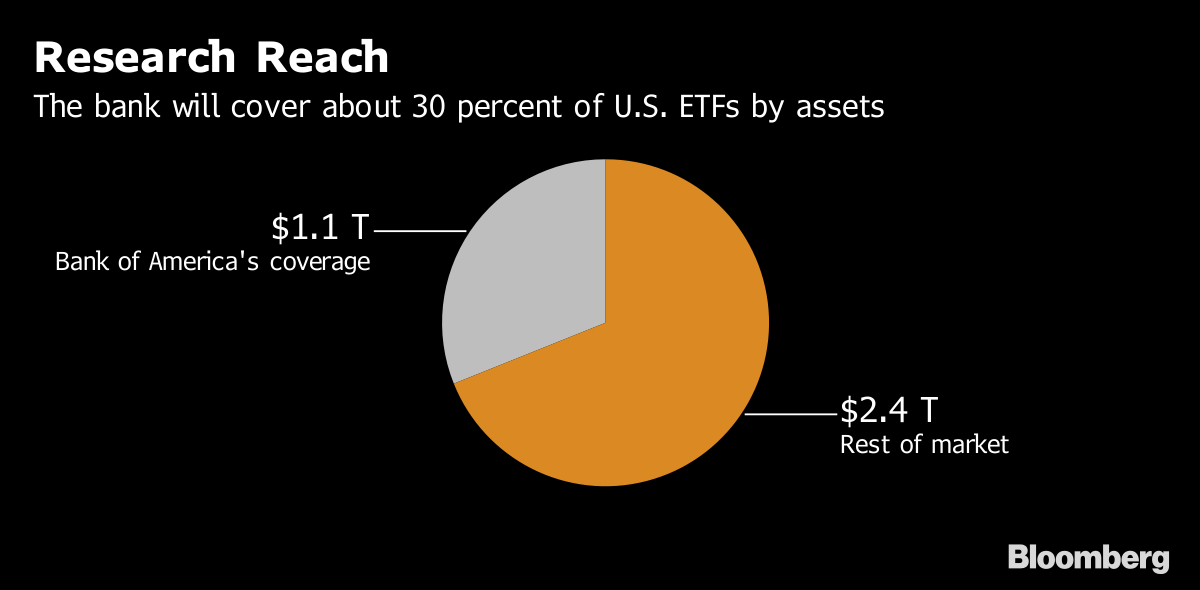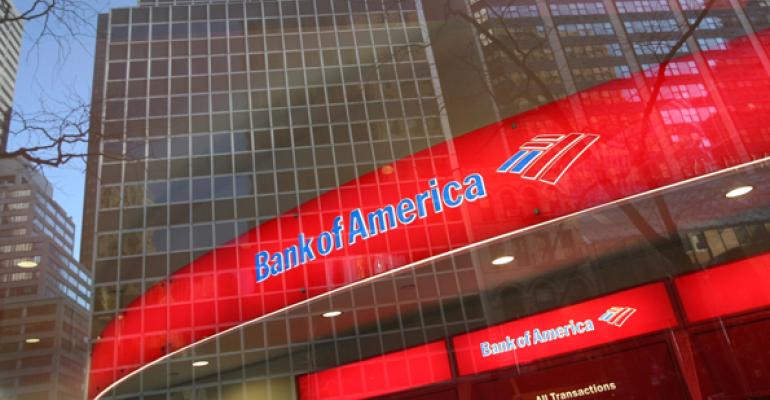By Rachel Evans
(Bloomberg) --Mary Ann Bartels knew there’d be pushback.
“We’re like Einstein,” she nervously joked to a colleague at Bank of America Corp. in the months before they unveiled their latest research, alluding to the deeply skeptical reaction that greeted the Nobel Prize-winning scientist’s theory of relativity. Bartels thought her analysis was spot-on. But still, she was steeling herself for some serious criticism.
What was bothering Bartels? Well, Bank of America was about to become the first investment bank to make trading recommendations on the $3.5 trillion of exchange-traded funds in the U.S. A regulatory ban on brokers giving ETFs buy or sell ratings -- the bread and butter of equity research teams -- had been lifted, allowing the bank to recommend funds the way it does stocks. Now Bartels, who was heading the effort, planned to ruffle feathers by doing just that.
Her team is bringing a stock-picker’s sensitivity to ETF scrutiny, using Bank of America’s buy and sell judgments on individual stocks -- compiled by scores of equity analysts covering more than 3,000 companies across 28 global industries -- to choose between funds with similar sounding names and strategies. It’s an almost heretical idea for advocates of passive investing, that benchmark-tracking ETFs aren’t as passive as many think and that there are significant differences in products following the same indexes.
Bartels is itching to show she’s right, even if she makes some enemies along the way.
“You always wonder what’s going to be the feedback,” said Bartels, head of ETF strategy for BofA Merrill Lynch Global Research, which published its first recommendations this month. “To stay fierce and not give up, to persevere and be the first sell-side shop out, it’s exciting.”
Benchmark Engineering
It’s all thanks to Congress, which passed a bill last October requiring that the U.S. Securities and Exchange Commission treat research on ETFs like stocks. Prior to that, it had been considered an offer of securities and therefore was subject to onerous disclosures that made it impractical.
This is a seismic shift. Overnight, investment banks have added a potential revenue stream. Financial advisers and other investors gained a new source of information on increasingly popular products. And the money managers behind the largest funds acquired a new outlet to promote their products -- if they can garner a favorable review.
“With all the slicing and dicing that Wall Street has done in creating all of these products, maybe we should get out of the mindset that it’s just an index and think about it as a portfolio,” Bartels said during an interview at her offices in New York. “The construction of the index is important -- and the construction is stocks -- so we think you have to start looking at stocks again.”
Ranking Funds
Indexes have come along way since Burton Malkiel and Jack Bogle championed ‘‘buying the market’’ more than four decades ago. These gauges are now engineered to capture different sectors, themes or factors more efficiently, according to whoever’s making the index. Funds still passively hold portfolios determined by these benchmarks, but these portfolios are as consciously constructed and backtested as any active manager’s selection.
In rating ETFs, Bank of America is considering a fund’s momentum and how closely it tracks its benchmark -- as well as its management fee and how easily it trades -- to designate it more attractive, attractive or less attractive using a numeric score from one through three. Each fund also is tagged with a favorable, neutral or unfavorable view on its ‘‘category’’ -- such as large cap stocks weighted by market capitalization, or the health-care sector -- to help clients choose between funds, even if the bank holds a negative outlook on a particular strategy.
Despite BofA shunning the simple ‘‘buy, hold, sell’’ terminology used for stocks, asset managers still want to know why their fund is ranked as more or less attractive than its competitors, Bartels said. State Street Corp.’s funds, for example, stand out positively in most sector groupings, while BlackRock Inc., which runs similar funds, doesn’t score as well due to higher expenses and tracking error, she said.
‘Little Offended’
Issuers’ responses have broadly been positive but “some people are a little offended that a lot of their ETFs wound up in that bucket of ‘attractive,’” Bartels said. “Attractive is attractive. We’re not saying that you’re not attractive, we’re really looking for those very fine tails.”
BlackRock declined to comment on BofA’s ratings. But the world’s largest money manager believes that careful analyses of ETF holdings by Wall Street will encourage institutional use, and it expects to see more of it, spokesman Ed Sweeney wrote in an email. “What’s in the index counts most,” he wrote.
Other analysts question how Bank of America will gauge the performance of its recommendations. BofA plans to track outcomes and tweak weightings in its model if needed.
New Tricks
The move to provide research broadly on ETFs is a departure for banks, but not a revolution. Citigroup Inc. formalized a unit last year to help clients use ETFs, while firms like Goldman Sachs Group Inc. have recommended options strategies on the funds for years. Others including Morgan Stanley, UBS Group AG and Wells Fargo & Co. have strategists in their wealth management groups looking at ETFs, some of which have ratings.
Bartels, who’s been at Bank of America for 21 years, joined the research team from the wealth management arm, where she worked for the firm’s chief investment office. The research team has semimonthly meetings with the CIO’s office, which decides what its financial advisers can buy and sell.
She’s currently focusing on a few large funds -- 109 of about 2,000 in the U.S. -- but plans to boost coverage to 300 ETFs by the end of next year. At the moment her team is just Bartels and Eli Lanik, who’s covered funds for more than a decade. But the firm has resources for more analysts, and in time it wants to offer ETF research on international equities, fixed income, commodities and leveraged products, and segment the work by industries and factors.

Ultimately success comes down to picking which funds will do best in which environments. And the key, Bartels said, is in dissecting the portfolios themselves rather than taking the indexes at face value.
“I came in with the impression that there’s not going to be that much of a difference between ETFs,” she said. “The Street got so focused on this passive stuff that we stopped thinking.”
--With assistance from Annie Massa.To contact the reporter on this story: Rachel Evans in New York at [email protected] To contact the editors responsible for this story: Jeremy Herron at [email protected] Eric J. Weiner, Andrew Dunn





